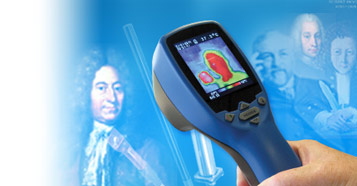 The sensations of hot and cold are fundamental to the human experience, yet how to measure temperature has challenged many great minds. It’s unclear if the ancient Greeks or Chinese had ways to measure temperature, so as far as we know, the history of temperature measurement began during the Renaissance.
The sensations of hot and cold are fundamental to the human experience, yet how to measure temperature has challenged many great minds. It’s unclear if the ancient Greeks or Chinese had ways to measure temperature, so as far as we know, the history of temperature measurement began during the Renaissance.The Temperature Measurement Challenge
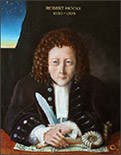
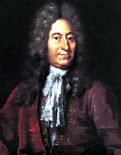
Creating a scale of measurement has been a challenge, too. In 1664, Robert Hooke proposed the freezing point of water be used as a zero point, with temperatures being measured from this. Around the same time, Ole Roemer saw the need for two fixed points, allowing interpolation between them. The points he chose were Hooke’s freezing point and also the boiling point of water. This, of course, leaves open the question of how hot or cold things can get.
That was answered by Gay-Lussac and other scientists working on the gas laws. During the 19th century, while investigating the effect of temperature on gas at a constant pressure, they observed that volume rises by the fraction of 1/267 per degree Celsius, (later revised to 1/273.15). This led to the concept of absolute zero at minus 273.15°C.
Temperature sensors based on Liquids and Bimetals
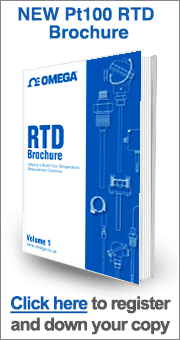 Galileo is reported to have built a device that showed changes in temperature sometime around 1592. This appears to have used the contraction of air in a vessel to draw up a column of water, the height of the column indicating the extent of cooling. However, this was strongly influenced by air pressure and was little more than a novelty.
Galileo is reported to have built a device that showed changes in temperature sometime around 1592. This appears to have used the contraction of air in a vessel to draw up a column of water, the height of the column indicating the extent of cooling. However, this was strongly influenced by air pressure and was little more than a novelty. The thermometer as we know it was invented in 1612 in what is now Italy by Santorio Santorii. He sealed liquid inside a glass tube, observing how it moved up the tube as it expanded. A scale on the tube made it easier to see changes, but this temperature measuring device lacked precise units.
Working with Roemer was Daniel Gabriel Fahrenheit. He began manufacturing thermometers, using both alcohol and mercury as the liquid. Mercury is ideal, as it has a very linear response to temperature change over a large range, but concerns over toxicity have led to reduced use. Other liquids have now been developed to replace it. Liquid thermometers are still widely used, although it is important to control the depth at which the bulb is immersed. Using a thermowell helps ensure good heat transfer to the temperature sensor.
The bimetallic temperature sensor was invented late in the 19th century. This takes advantage of the differential expansion of two metal strips bonded together. Temperature changes create bending that can be used to activate a thermostat or a gauge similar to those used in gas grills. Accuracy is low — perhaps plus or minus 2 degrees — but these sensors are inexpensive, so they have many applications.
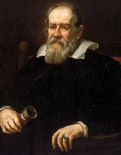
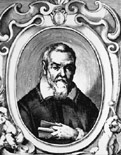
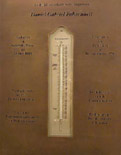
 Fluid-Expansion thermometers
Fluid-Expansion thermometers
Fluid-expansion devices, as the household thermometer, generally have two classifications: the mercury type and the organic-liquid type. However some gas versions are also available. Fluid-expansion sensors do not require electric power, do not pose explosion hazards, and are stable even after repeated cycling.
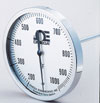 Bimetallic Measurement Devices
Bimetallic Measurement Devices
Bimetallic thermometers have strips of two metals bonded together. When heated, one side will expand more than the other, and the resulting bending is translated into a temperature reading by mechanical linkage to a pointer.
Thermoelectric Effects
Early in the 19th century, electricity was an exciting area of scientific investigation, and scientists soon discovered that metals varied in their resistance and conductivity. In 1821, Thomas Johann Seebeck discovered that a voltage is created when the ends of dissimilar metals are joined and placed at different temperatures. Peltier discovered that this thermocouple effect is reversible and can be used for cooling.
In the same year, Humphrey Davey demonstrated how the electrical resistivity of a metal is related to temperature. Five years later, Becquerel proposed using a platinum-platinum thermocouple for temperature measurement, but it took until 1829 for Leopoldi Nobili to actually create the temperature sensor.
Platinum is also used in the resistance temperature detector invented in 1932 by C.H. Meyers. This measures the electrical resistance of a length of platinum wire and is generally considered the most accurate type of temperature sensor. RTDs using wire are by nature fragile and unsuitable for industrial applications. Recent years have seen the development of film RTDs, which are less accurate but more robust.
The 20th century also saw the invention of semiconductor temperature measuring devices. These respond to temperature changes with good accuracy but until recently lacked linearity.
In this other article we cover the main differences of those temperature sensors.
In the same year, Humphrey Davey demonstrated how the electrical resistivity of a metal is related to temperature. Five years later, Becquerel proposed using a platinum-platinum thermocouple for temperature measurement, but it took until 1829 for Leopoldi Nobili to actually create the temperature sensor.
Platinum is also used in the resistance temperature detector invented in 1932 by C.H. Meyers. This measures the electrical resistance of a length of platinum wire and is generally considered the most accurate type of temperature sensor. RTDs using wire are by nature fragile and unsuitable for industrial applications. Recent years have seen the development of film RTDs, which are less accurate but more robust.
The 20th century also saw the invention of semiconductor temperature measuring devices. These respond to temperature changes with good accuracy but until recently lacked linearity.
In this other article we cover the main differences of those temperature sensors.
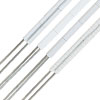 Thermocouple Sensors
Thermocouple Sensors
Thermocouples consist essentially of two strips or wires made of different metals and joined at one end. Changes in the temperature at that juncture induce a change in electromotive force (emf) between the other ends.
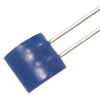 RTDs
RTDs
RTDs rely on resistance change in a metal, with the resistance rising more or less linearly with temperature. These type of sensors are one of the most accurate temperature sensors and are broadly used in industry and labs.
 Thermistor Probes
Thermistor Probes
Thermistor probes are thermistor elements embedded in metal tubes. Since thermistors are non-linear, the instrument used to read the temperature must linearize the reading.
Thermal Radiation
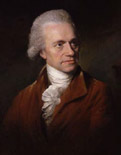
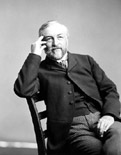
This was followed in 1878 by the bolometer sensor. Invented by American Samuel Langley, it used two platinum strips, one of which was blackened, in a Wheatstone bridge arrangement. Heating by infrared radiation caused a measurable change in resistance.
Bolometers are sensitive to infrared light across a wide range of wavelengths. In contrast, the photon detector-type devices developed since the 1940s tend to respond only to infrared in a limited wave band. Lead sulphide detectors are sensitive to wavelengths up to 3 microns while the discovery of HgCdTe ternary alloy in 1959 opened the door to detectors tailored to specific wavelengths.
Today, inexpensive infrared pyrometers are used widely, and thermal cameras are finding more applications as their prices drop.
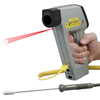 Infrared Temperature sensors
Infrared Temperature sensors
Infrared sensors are non-contacting devices. They convert the energy to an electrical signal that can be displayed in units of temperature after being compensated for ambient temperature variation.
Temperature Scales
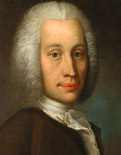
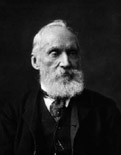
A quarter century later, Anders Celsius proposed the 0 to 100 scale, which today bears his name. Later, seeing the benefit in a fixed point at one end of the scale, William Thomson, later Lord Kelvin, proposed using absolute zero as the starting point of the Celsius system. That led to the Kelvin scale, used today in the scientific field.
Today, temperature measurement scales are defined in a document titled International Temperature System 90, or ITS-90 for short. Readers wishing to check or better understand their measurement units should obtain a copy.
 CLOSE
CLOSE



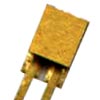

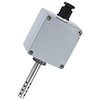
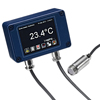
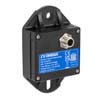
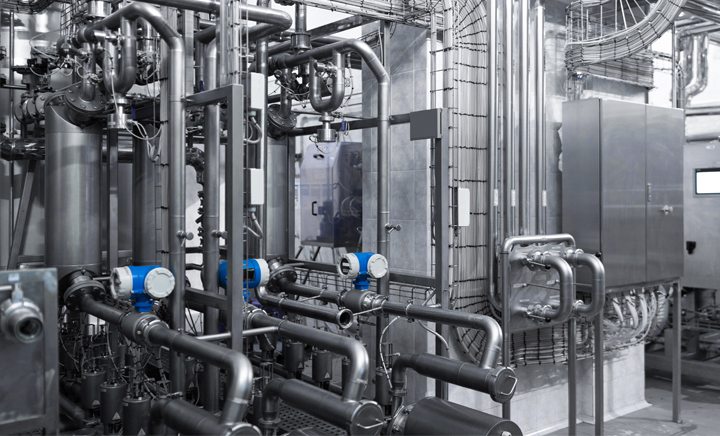
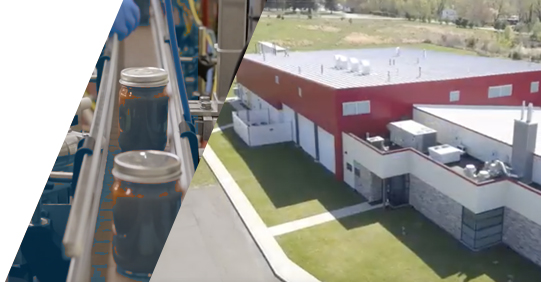 Omega's relationship with Rutgers sprouted with their goals in substituting manual processes with an IoT solution for hands-off data collection capabilities.
Omega's relationship with Rutgers sprouted with their goals in substituting manual processes with an IoT solution for hands-off data collection capabilities.
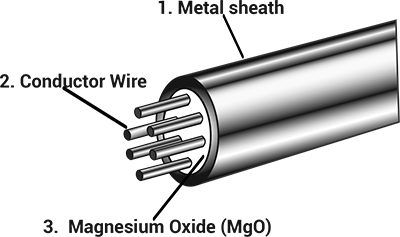 MI cables are used in high temperature or high pressure harsh environments for a good reason, here's why:
MI cables are used in high temperature or high pressure harsh environments for a good reason, here's why: